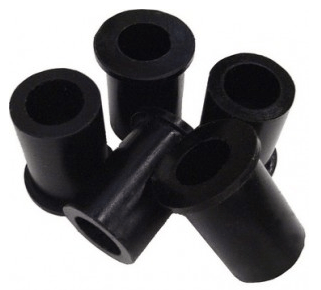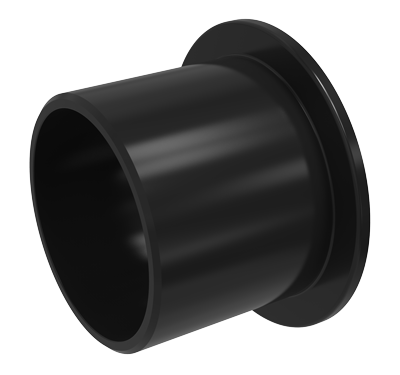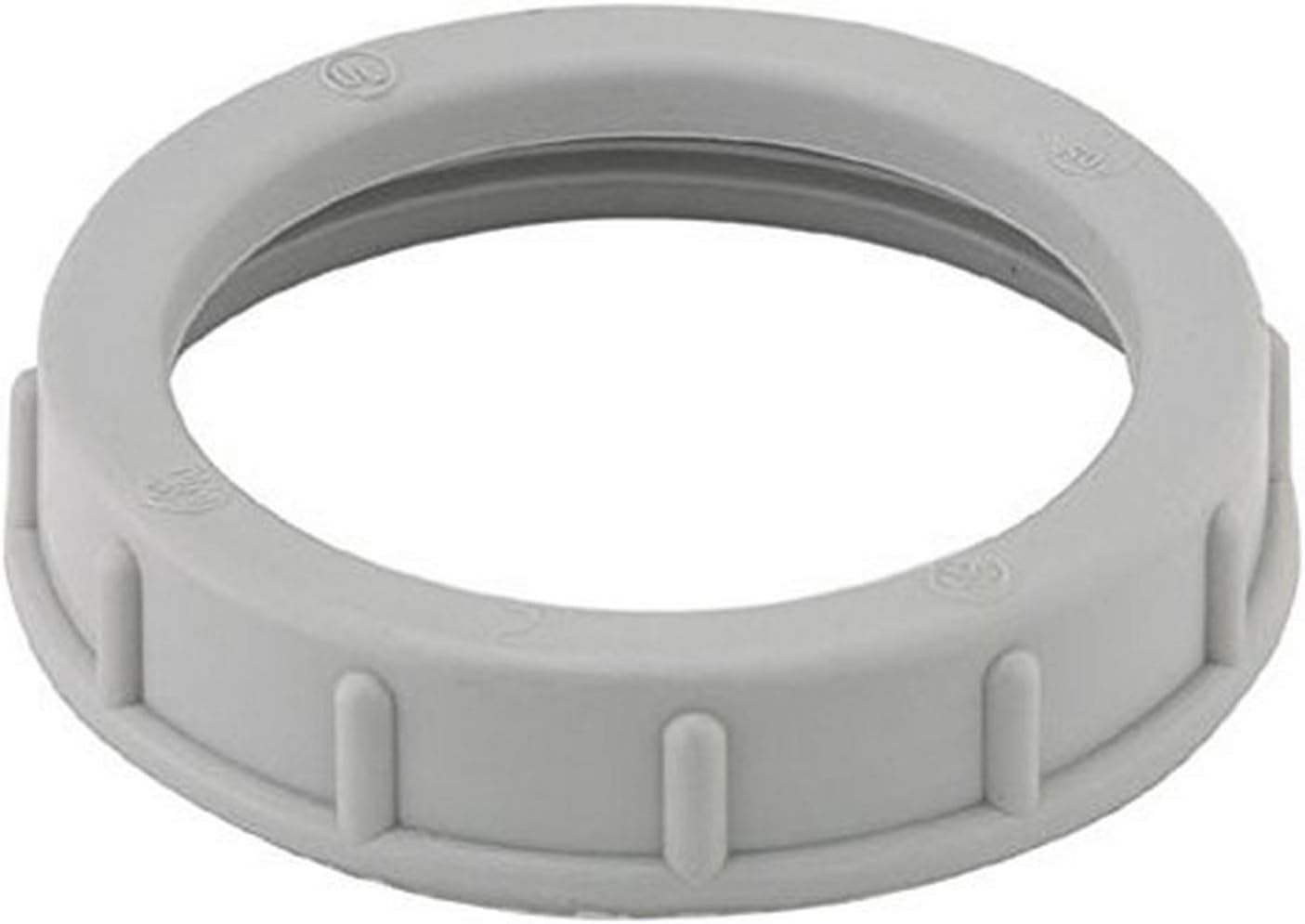
Can I get advice on choosing plastic bushings for noise reduction in machinery or equipment?
If you are seeking advice on choosing plastic bushings for noise reduction in machinery or equipment, consider the following factors:
1. Material Selection:
– Look for plastic bushings made from materials specifically designed for noise reduction, such as acetal (POM), nylon, or polyurethane. These materials have inherent damping properties that can help reduce vibrations and noise.
– Consider the operating conditions of your machinery or equipment. Ensure that the chosen plastic bushings can withstand the temperature, humidity, and chemical exposure of the application environment.
2. Design and Fit:
– Choose bushings with a design that matches the specific requirements of your machinery or equipment. Consider factors such as the load-bearing capacity, clearance, and fit tolerance.
– Opt for bushings with a tight fit to minimize movement and vibration, which can contribute to noise generation. A snug fit can help dampen vibrations and reduce noise effectively.
3. Lubrication and Maintenance:
– Plastic bushings often require lubrication to minimize friction and noise. Consider whether the chosen bushings need periodic lubrication or if they are self-lubricating.
– Evaluate the maintenance requirements of the bushings. Some plastic bushings may require regular inspection and replacement if they wear out quickly, while others have a longer lifespan.
4. Compatibility and Performance:
– Ensure that the chosen plastic bushings are compatible with the machinery or equipment they will be used in. Consider factors such as shaft material, surface finish, and operating speed to ensure optimal performance.
– Look for bushings that have been specifically tested or certified for noise reduction applications. Manufacturers may provide information on noise reduction capabilities, such as decibel reduction or noise attenuation levels.
5. Expert Advice and Supplier Support:
– Consult with experts or suppliers specializing in plastic bushings for noise reduction applications. They can provide valuable guidance based on their knowledge and experience.
– Explain your specific requirements and provide details about the machinery or equipment to receive tailored recommendations and ensure the best possible noise reduction solution.
By considering material selection, design and fit, lubrication and maintenance, compatibility and performance, and seeking expert advice and supplier support, you can make an informed decision when choosing plastic bushings for noise reduction in machinery or equipment. Prioritize noise reduction properties while ensuring compatibility with the application and considering long-term performance and maintenance needs.

Are there tutorials on troubleshooting common issues with plastic bushings and their solutions?
Yes, there are tutorials available that provide guidance on troubleshooting common issues with plastic bushings and offer solutions to resolve them. Troubleshooting tutorials can be helpful in identifying and addressing problems that may arise during the use of plastic bushings. Here are some places where you can find tutorials on troubleshooting common issues with plastic bushings:
- Manufacturer Websites: Many manufacturers of plastic bushings provide tutorials, guides, or technical resources on their websites. These resources often include troubleshooting sections that address common issues encountered with their products. Visit the websites of manufacturers that produce the specific type or brand of plastic bushings you are using. Look for documentation, FAQs, or technical articles that cover troubleshooting topics. Manufacturers are typically knowledgeable about their products and can offer valuable insights into resolving common issues.
- Online Forums and Communities: Online forums and communities focused on engineering, mechanical design, or specific industries can be excellent sources of information for troubleshooting plastic bushing issues. Participate in these forums and engage with professionals who have experience in working with plastic bushings. Ask questions, describe the issues you are facing, and seek advice from the community. Often, you will find individuals who have encountered similar problems and can share their solutions and experiences.
- Technical Publications and Journals: Technical publications, journals, and magazines related to mechanical engineering, tribology, or maintenance often contain articles that discuss troubleshooting techniques for various mechanical components, including plastic bushings. These publications may provide case studies, analysis, and practical solutions for common problems. Explore relevant publications and search their archives for articles on plastic bushing troubleshooting. Academic databases and online libraries can be valuable resources for accessing technical publications.
- YouTube and Online Video Platforms: Video tutorials on platforms like YouTube can be a visual and interactive way to learn about troubleshooting plastic bushing issues. Many content creators and industry experts share their knowledge and demonstrate techniques for diagnosing and resolving common problems. Search for keywords related to plastic bushing troubleshooting on these platforms to find relevant videos. Watching demonstrations can often provide a clearer understanding of the troubleshooting process and the steps involved in resolving issues.
- Training Courses and Workshops: Some organizations or training providers offer courses or workshops focused on mechanical maintenance, machinery troubleshooting, or specific industrial applications. These training programs may cover topics related to plastic bushings and provide hands-on experience in identifying and resolving common issues. Check with local trade schools, technical institutes, or professional training organizations to see if they offer courses that include plastic bushing troubleshooting as part of their curriculum.
When using troubleshooting tutorials, it is important to carefully understand the symptoms and causes of the issues you are encountering. Ensure that the suggested solutions align with your specific situation and take into account the operating conditions and application requirements of your plastic bushings.
By accessing tutorials from these various sources and applying the recommended troubleshooting techniques, you can gain valuable insights into identifying and resolving common issues with plastic bushings, improving their performance, and prolonging their lifespan.

What are the advantages of using plastic bushings over traditional metal bushings in machinery?
Using plastic bushings in machinery offers several advantages compared to traditional metal bushings. Plastic bushings, also known as polymer bushings or plain bearings, are made from various synthetic materials such as nylon, PTFE (polytetrafluoroethylene), UHMW (ultra-high-molecular-weight polyethylene), or composite polymers. Here are some advantages of using plastic bushings:
- <strong(Self-Lubrication): Plastic bushings often have inherent self-lubricating properties. They contain solid lubricants or have low-friction surfaces, reducing the need for additional lubrication. This feature reduces maintenance requirements, eliminates the risk of oil or grease contamination, and improves the overall reliability and cleanliness of the machinery.
- Low Friction and Reduced Wear: Plastic bushings typically exhibit low coefficients of friction, resulting in smoother operation and reduced wear on mating surfaces. The lower friction reduces energy consumption and heat generation, contributing to improved efficiency and extended equipment lifespan.
- Noise Reduction: Plastic bushings often dampen vibration and noise, resulting in quieter machinery operation. This is particularly beneficial in applications where noise reduction is essential, such as in consumer appliances or precision equipment.
- Corrosion Resistance: Unlike metal bushings, plastic bushings are generally resistant to corrosion and chemicals. They can withstand exposure to harsh environments, including moisture, chemicals, and certain acids or alkalis, without deteriorating. This corrosion resistance contributes to longer service life and reduced maintenance requirements.
- Lightweight: Plastic bushings are typically lighter than their metal counterparts. This can be advantageous in applications where weight reduction is important, such as in automotive or aerospace industries, as it can contribute to improved fuel efficiency and overall performance.
- Cost-Effectiveness: Plastic bushings are often more cost-effective compared to metal bushings. They can be produced at a lower cost, and their self-lubricating properties eliminate the need for additional lubricants and associated maintenance costs. Additionally, plastic bushings can reduce the wear on mating parts, extending the lifespan of the overall system and reducing replacement costs.
- Design Flexibility: Plastic bushings offer design flexibility due to their ability to be molded into complex shapes. This allows engineers to design customized bushings to fit specific applications, optimizing performance and reducing the need for additional components or modifications.
It’s important to note that the advantages of plastic bushings may vary depending on the specific application and operating conditions. In certain high-load or high-temperature scenarios, metal bushings may still be preferred. Therefore, it’s crucial to consider factors such as load capacity, temperature range, speed, and environmental conditions when selecting the appropriate bushing material for a given machinery application.
By leveraging the advantages of plastic bushings, machinery can benefit from improved performance, reduced maintenance, extended lifespan, and enhanced overall efficiency.


editor by CX 2024-05-16